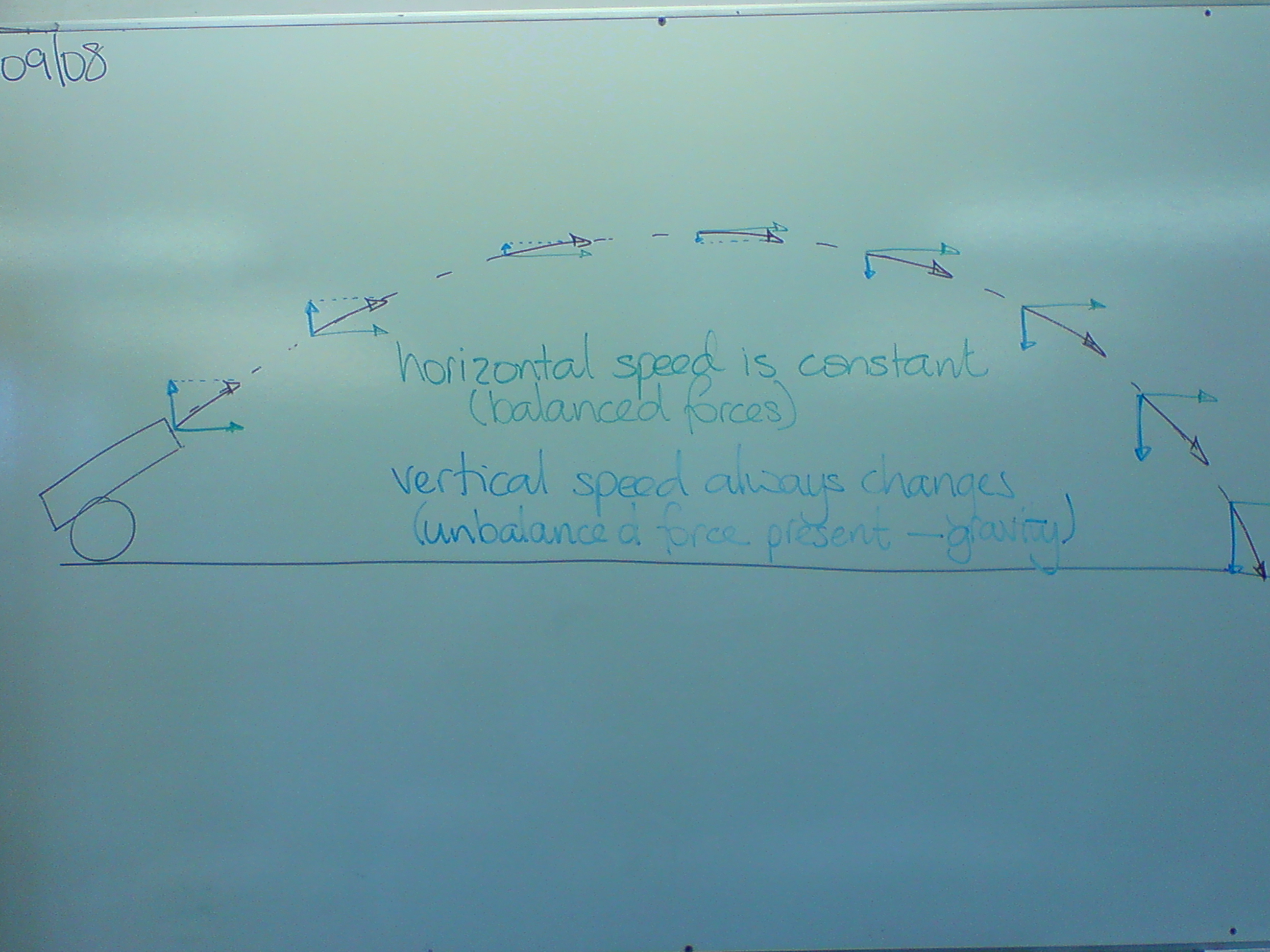One of the things we spoke about today was the difficulty of dealing with horizontal and vertical velocities one at a time when we analyse the motion of a projectile. I have uploaded this diagram to see if it will help you see how the horizontal and vertical velocities change as we look at different parts of the trajectory. You can click on the diagram to see a larger version if you like.
Hopefully you can see the arrow I have drawn in for the velocity of the projectile at any point – it’s the brown arrow. I have added blue and green arrows to this.
The green arrows show the horizontal motion of the projectile. The green arrows stay the same length throughout the flight because there is no unbalanced force acting in this direction (Newton’s 1st Law told us that balanced forces result in a constant speed).
Looking again at the diagram, you should notice that the blue arrows show the vertical velocity of the projectile. The blue arrows change as we move along the trajectory. For the first half of the diagram, the blue arrows point up because the projectile continues upwards towards it maximum height (called the apex). As the projectile travels towards the apex, gravity acts to slow it down – we have deceleration due to gravity. This is why the blue arrows get shorter – the length of the arrow shows the size or magnitude of the velocity. Once it has passed the apex, the projectile falls downwards. The diagram shows that the blue arrows point downwards during the second half of the journey. As the projectile falls, it’s vertical velocity increases (it is speeding up) and this is shown by the blue arrows getting longer. This is acceleration due to gravity.
Notice that all the time that the blue arrows change their length and direction, the green arrows always have the same length and point in the same direction. Horizontal velocity is constant in projectile motion.
We can analyse horizontal motion quite easily using the relationship between speed, distance and time.
To analyse the vertical motion, we need to use the equations of motion.


Katie’s pretty diagram!! Helped me loads
Hmmm.
Did Katie draw it? No.
Did Katie write the summary underneath? No.
It is pretty though! };8)
feasger math
cimmar a tha sibh?
Is that you, David? I’m not too good at reading Gaelic signs!
Truely you are an ownosaurus!! I will correct my previous comment by saying it is Mr Mackenzie’s truely wonderful picture and summary to help Katie…..better?
tha.
Catriona is MacCoinnich, gle mhath.
‘S fhada bho nach fhaca mi thu.
B’eolach mo sheanar air.
‘S math an sgathan suil caeaid.